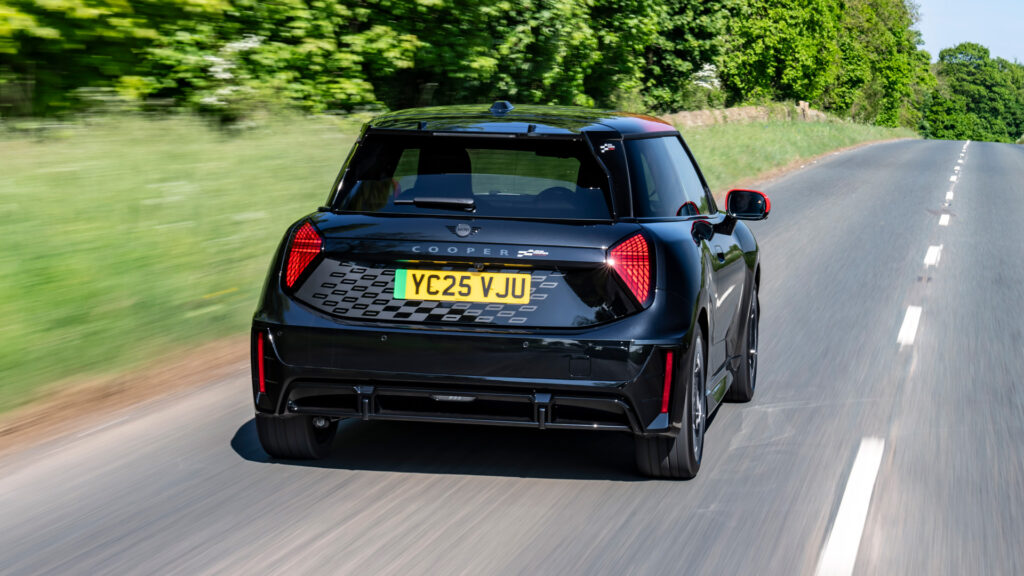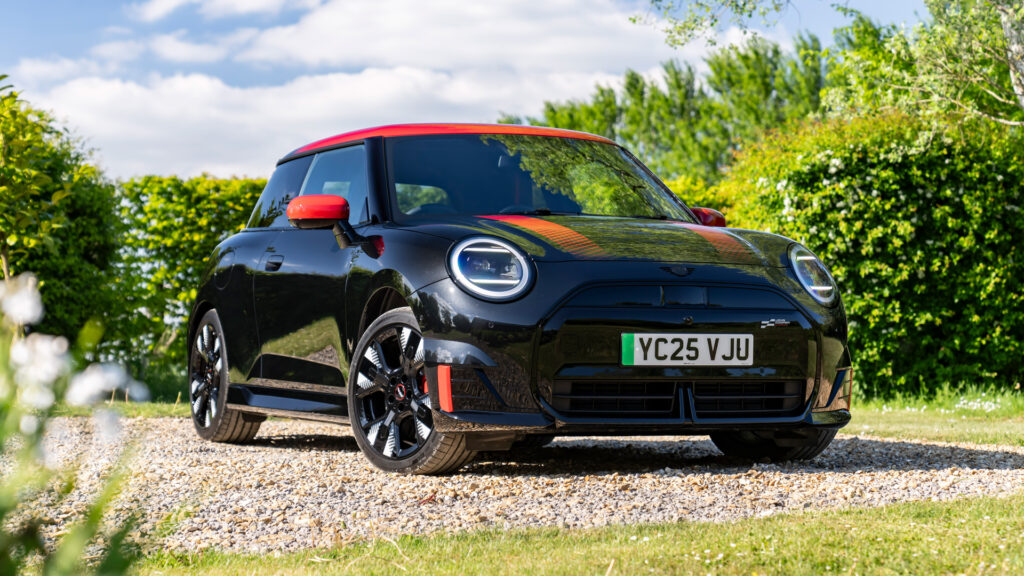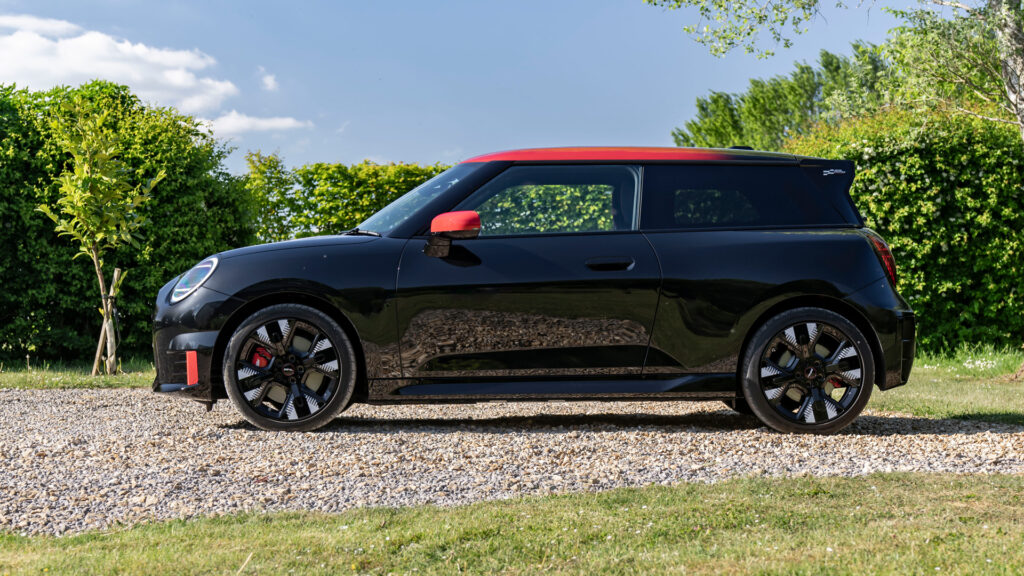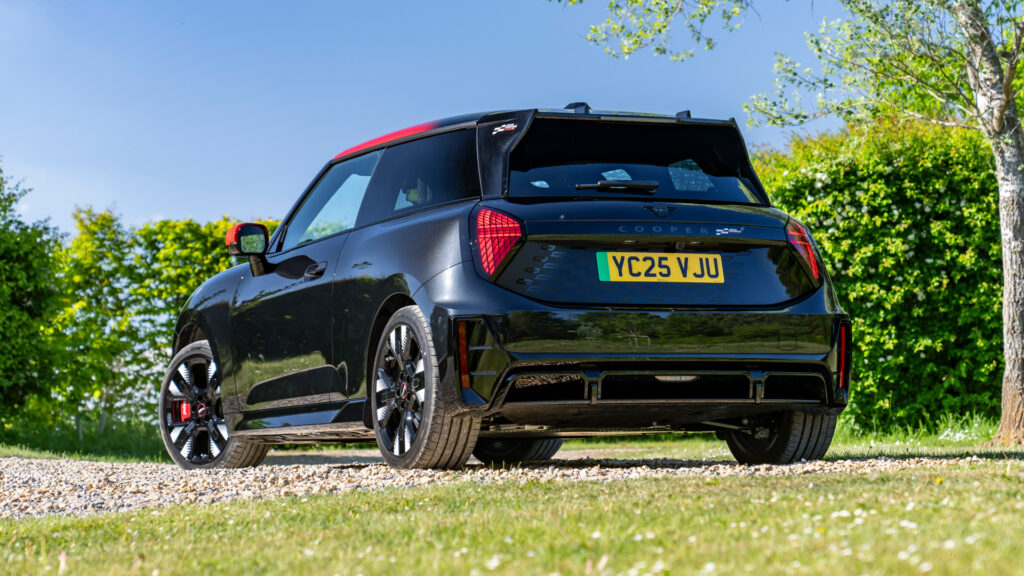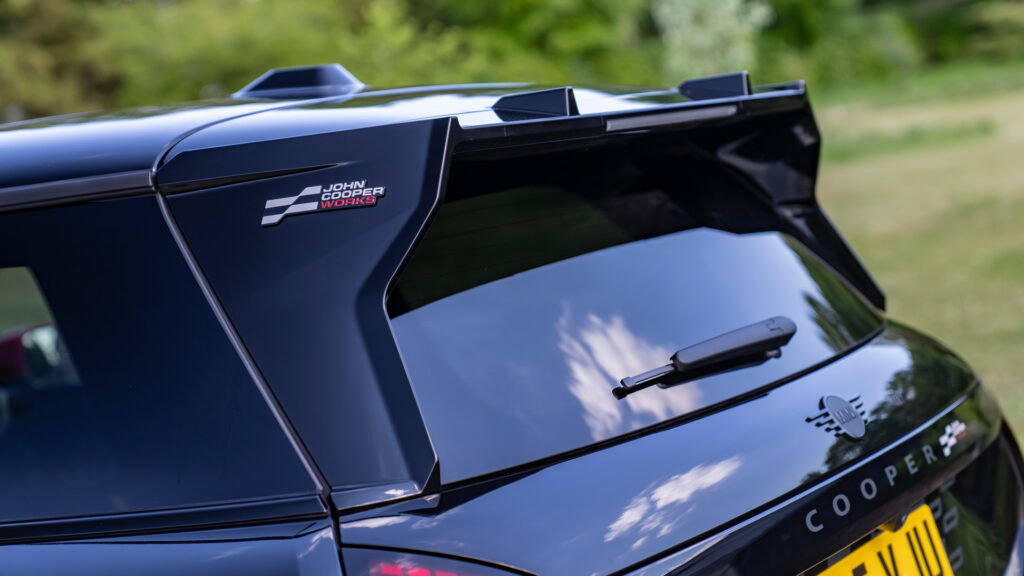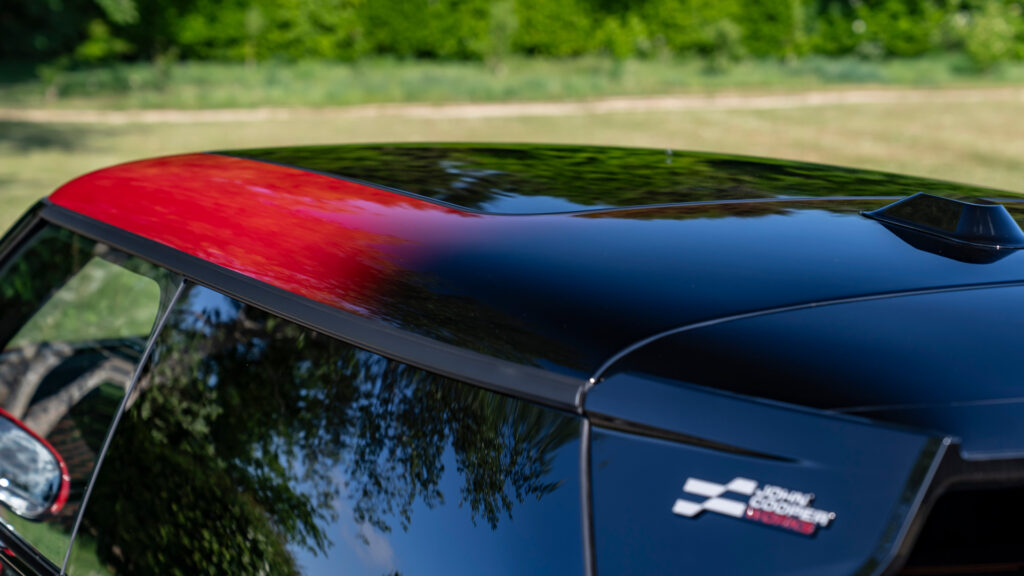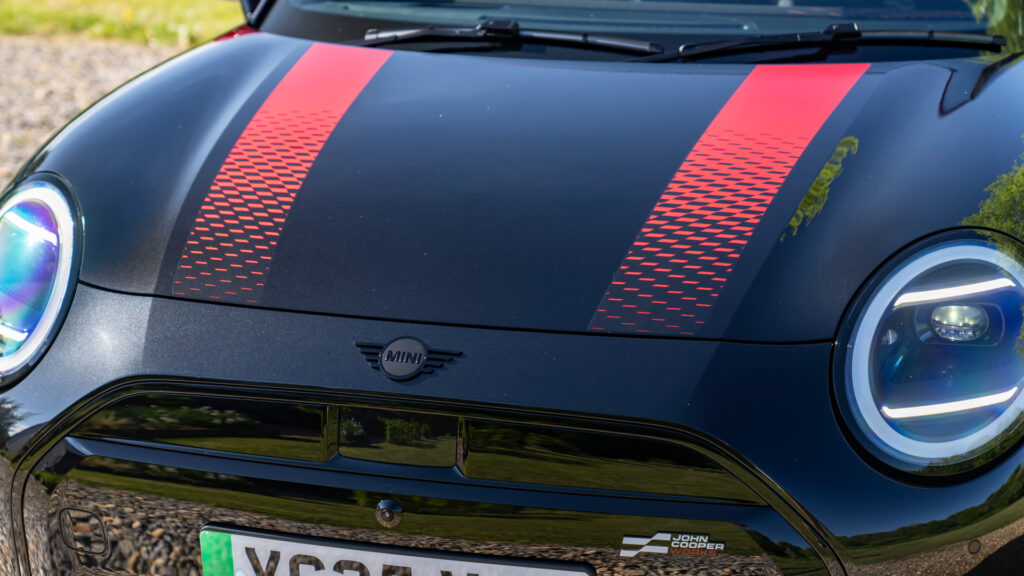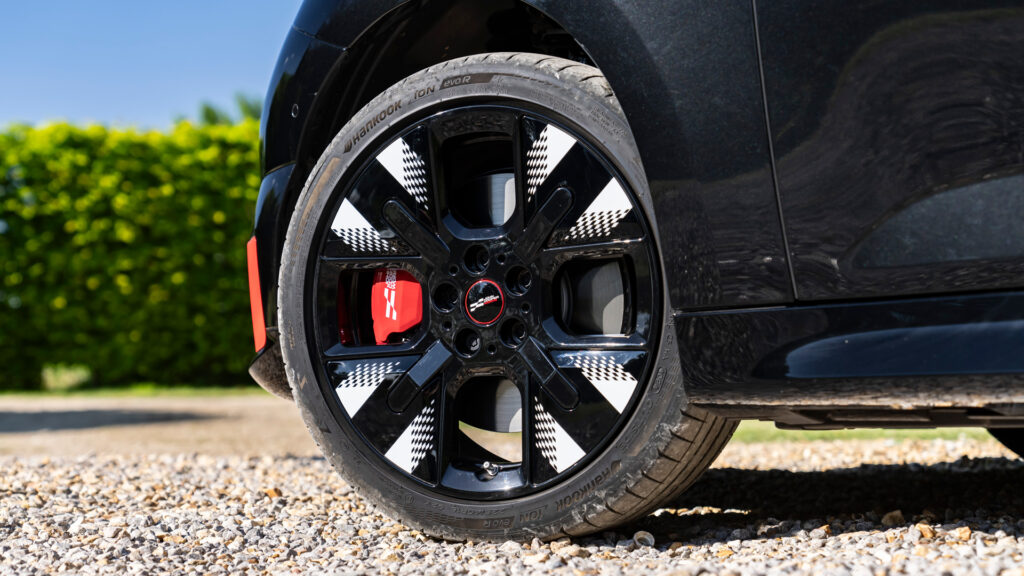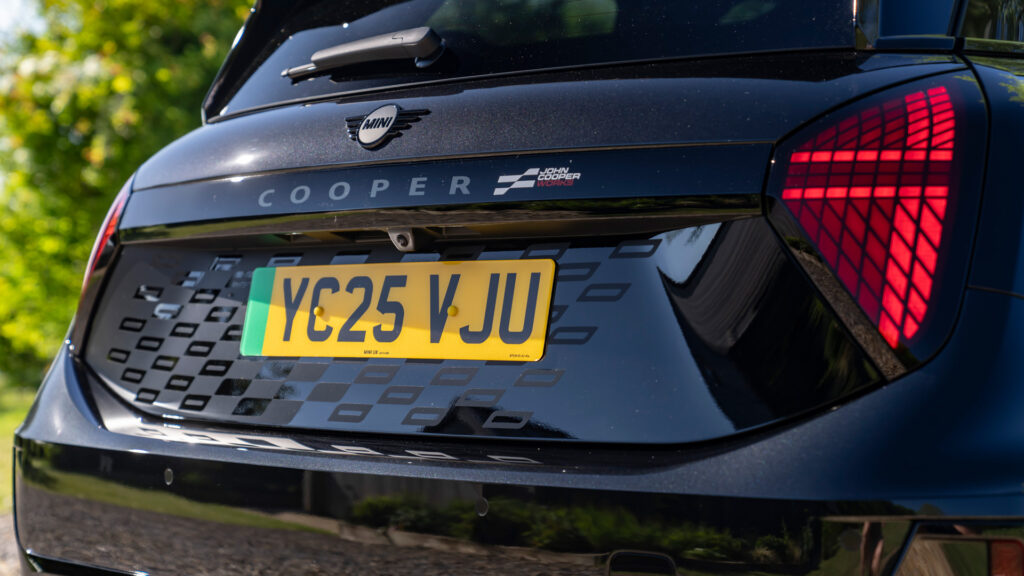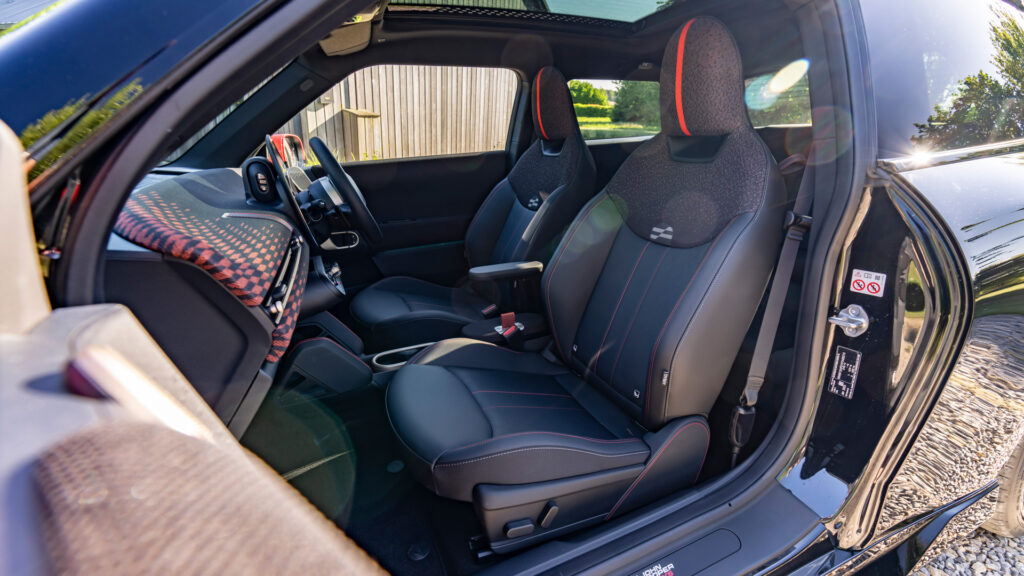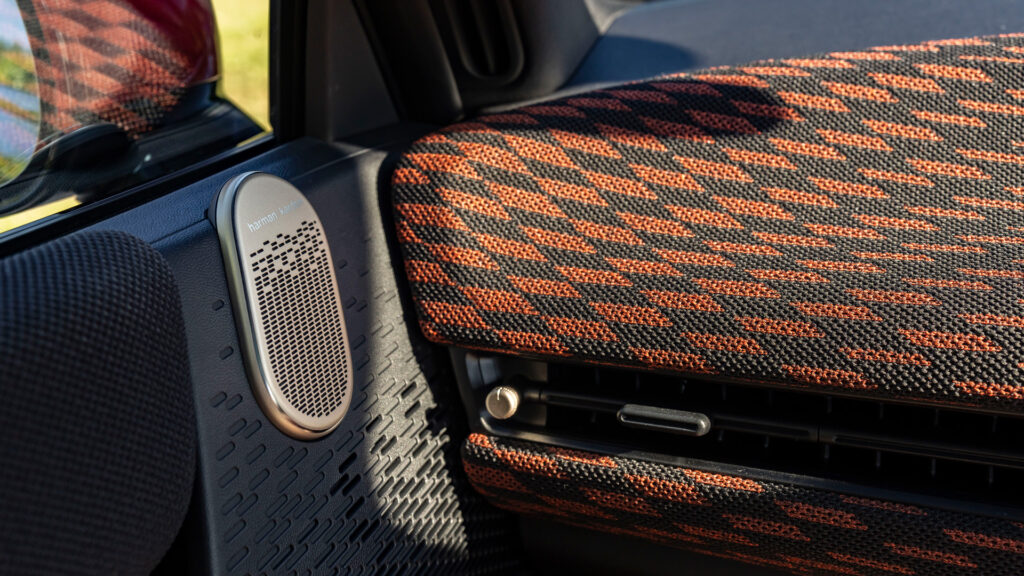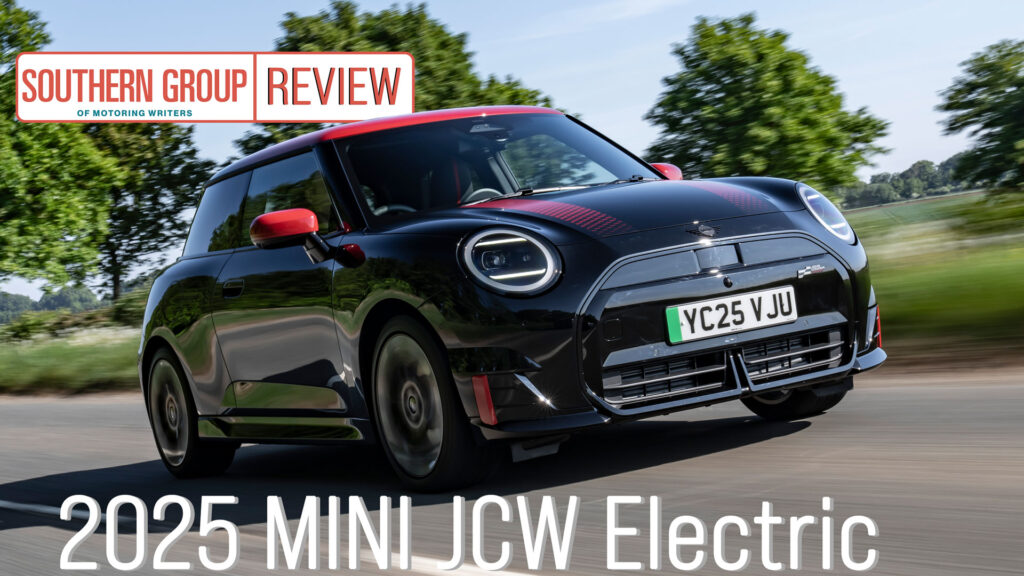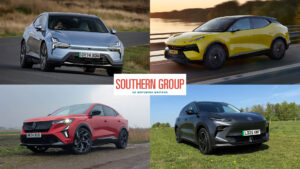As the electric car evolution continues, there is one niche that has yet to reach its full potential: the hot hatchback. However, with models such as the Abarth 500e, Cupra Born, and Hyundai Ioniq 5 N all trying to tempt enthusiasts to go electric, the new 2025 MINI John Cooper Works (JCW) Electric is the latest arrival to promise zero-emission driving thrills.
Its arrival marks a significant milestone for the JCW badge, as the first proper electric model to wear the name. One that takes its origins from the regular MINI hatchback, with the promise of far improved performance combined with sporty driving appeal in an everyday usable package.
To put it to the test, the lovely people at BMW/MINI UK invited us to the Cotswolds for the day to test it out.
The 2025 MINI JCW Electric: the full lowdown
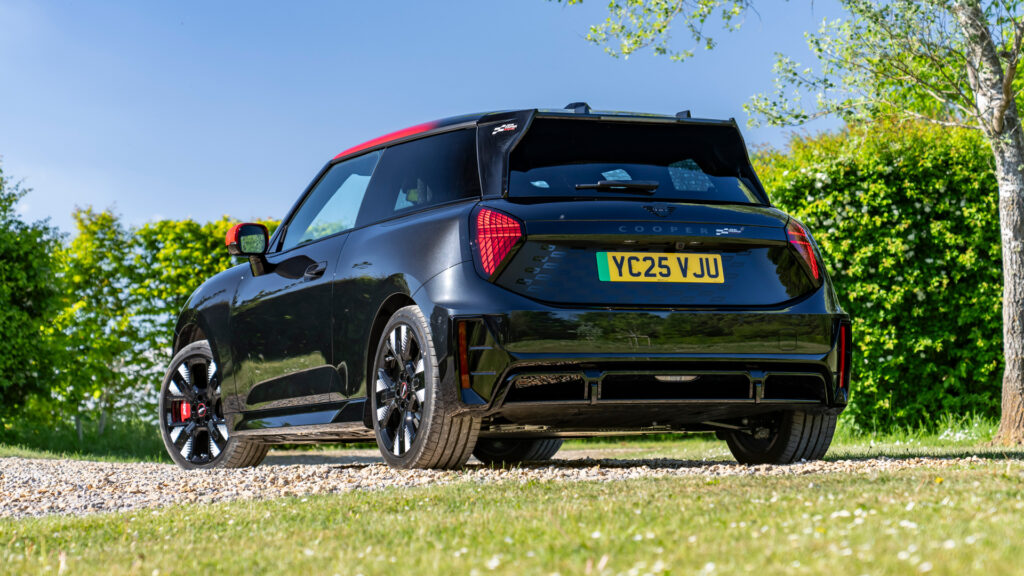
In John Cooper Works guise, the normally humble-looking F66-generation MINI is transformed on the outside. To set it apart from the standard car, the JCW gets a sportier stance, bigger 18-inch alloy wheels and sportier looks thanks to a more aggressive-looking bodykit.
Other go-faster design highlights include the deeper front spoiler, a rear splitter, a very angular rear spoiler, and chequered flag decals on the rear hatch. In the metal, it looks aggressive and sporty, exactly how a hot hatchback should be. Of course, being a modern MINI, there’s an array of personalisation options such as bonnet stripes, various roof decals, and a choice of six paint colours. If this isn’t enough there’s also a catalogue of JCW Performance parts available including aero parts, side skirts, alternative wheel designs, and decals.
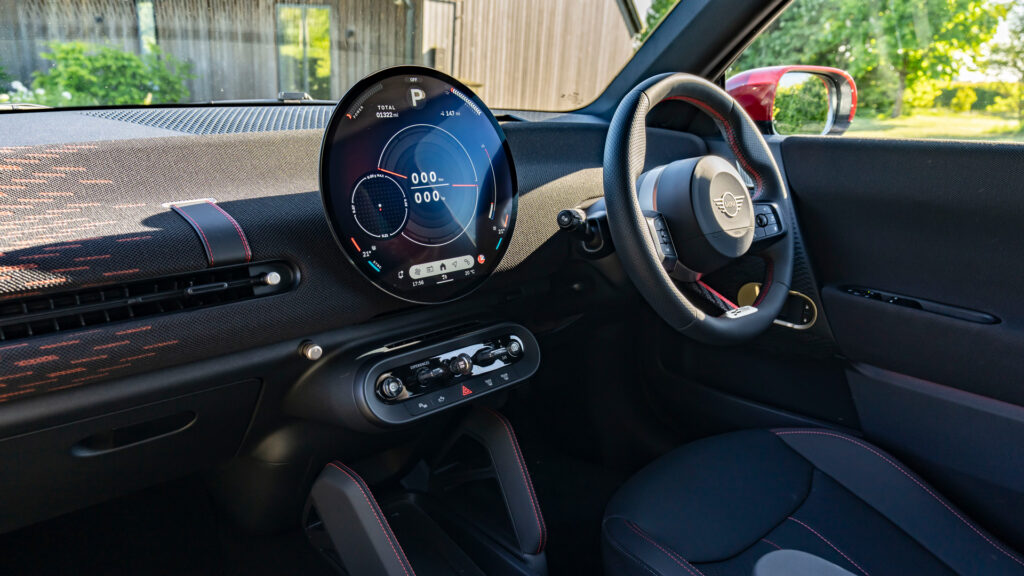
Inside you’ll find the MINI’s latest interior design carried over from the standard car with a centre-mounted circular OLED infotainment screen that spans over nine inches in diameter and the option of a heads-up display for the driver in place of a conventional dial cluster. Other JCW specific additions include sports seats in the front and more splashes of red trim dotted around the interior including a chequered flag decal on the dashboard. This is contrasted by bronze speaker grilles and door handles – a subtle styling departure from the usual grey or silver trim.
Is it a real John Cooper Works underneath?
Power comes from a single front-mounted electric motor which sends a maximum of 254bhp and 340Nm of torque to the front wheels via a single-speed gearbox. While battery size has often been a source of criticism in EVs due to weight figures, here, the JCW Electric is powered by a 54.2 kWh battery, which is officially capable of 251 miles of range. With a kerbweight of 1,725kg, which is around 300kg heavier than the petrol JCW, the battery size is a decent compromise that offers respectable on-paper range with a bearable weight increase.
Other specific JCW-only changes to enhance the hot hatch feel of the car include a sportier suspension setup with a lower ride height and additional camber on the front axle. It also sits on sporty Hankook Ion Evo performance tyres from the factory which are specific to this model.
How does an electric hot hatch drive?
Since the JCW Electric was unveiled, the “go-kart’ handling mantra has always been mentioned. And we’re happy to report that this new model delivers exactly that with a few distinctive hot hatch traits and a few compromises.
Pin the throttle hard in a straight line, and the car reacts with a flurry of hyperactivity, giving you plenty of torque steer. Initially, this behaviour leaves you gripping the wheel tightly to ensure the car stays straight. After a bit of practice, the torque steer is still very much present but controllable with a bit of careful modulation of the throttle pedal under hard acceleration. While modern suspension and electronic aids have sought to nullify this trait in most front-wheel-drive performance cars, it does add a bit of hot hatch character to the JCW Electric that forces you to be involved in driving it in order to make quick progress.
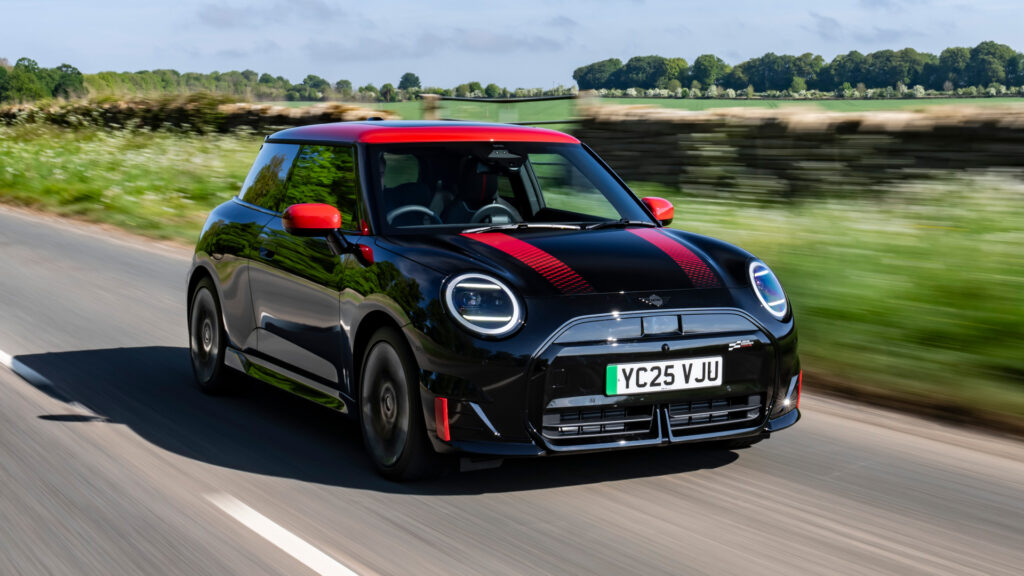
It’s not lacking in performance either. Learn to control the torque delivery, and the JCW Electric sprints to 62mph in 5.9 seconds. A figure 0.2 seconds quicker than the petrol-powered model and one that makes it the quickest production MINI ever. It produces 227bhp normally, but a quick click of the “Boost’ paddle to the left of the steering wheel adds another 27bhp (254bhp total), along with a video game-style 10-second graphic countdown on the infotainment screen, which we liked very much. To add to the excitement, you also get a distinct whooshing engine noise to let you know you’re in maximum velocity mode.
Without a petrol engine in the nose, and despite the extra weight, it feels accurate in the corners. Take on a quick corner and the turn-in is keen like an oversized go-kart with the tyres providing plenty of grip.
The steering is very quick but has little feel or feedback, making it feel a bit disconnected at times. At first this left us struggling to work out the amount of turn-in required when cornering, with minor inputs needed to correct the direction of travel. However, once mastered, the steering makes it easy to accurately place the car in a corner, although the lack of feedback as to what’s going on does detract from the fun factor slightly.
The suspension is also very firm, as are the sports seats. Normally in a hot hatch these are things you want, but here they combine to upset both the ride and the driver. As on several occasions during our test drive in the Cotswolds, the tarmac appeared to be fairly smooth at a glance, before the chassis decided to transmit almost every imperfection through to the cabin and the driver’s seat, resulting in the driver bouncing around in the seat.
When the road surface is smooth the chassis setup offers excellent accuracy when mixed with the ‘all at once’ torque delivery and the potent acceleration. Elements that combine to make the JCW Electric plenty of fun to drive on a twisty B-road
OK, it’s a real hot hatch, but what are the drawbacks?
As we’ve already mentioned, the ride quality is one thing that could be jarring on longer journeys. Also, being a MINI, and not entirely unexpectedly, full-sized adults will find the rear seats cramped and difficult to get into.
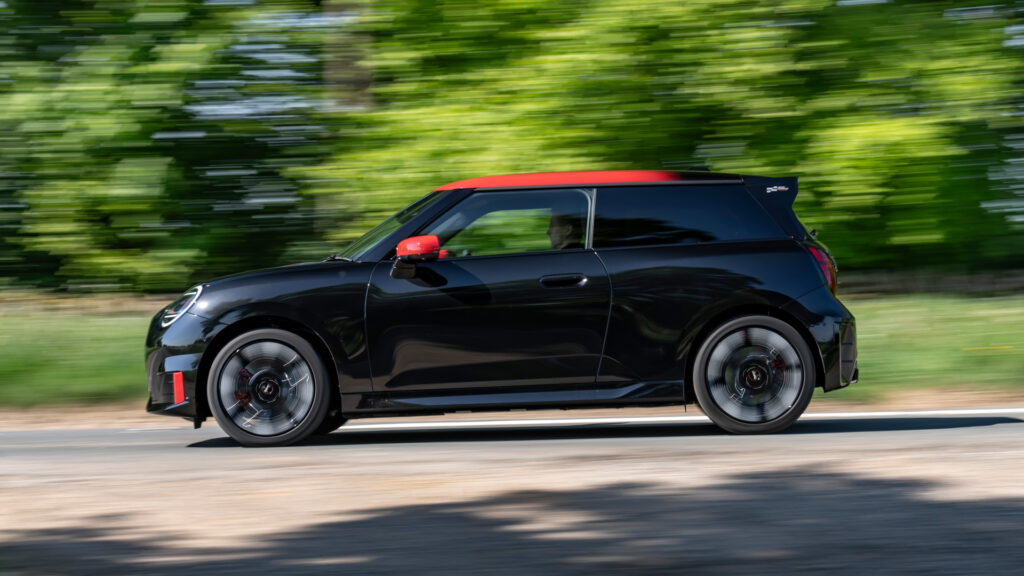
The boot offers 210 litres of storage up to the parcel shelf, decent enough for a supermini hot hatch, and likely best suited for two people and luggage, with the MINI’s compact dimensions making it a challenge if you need to carry four passengers and luggage at the same time.
MINI claims the JCW electric can manage up to 251 miles on a full charge. During our test we managed 3.4 miles/kWh, which is a range of around 165 miles – some way off the official range figure. As a caveat, this figure was recorded after some somewhat spirited driving with the air-con on high on a warm day, meaning we’d expect it to improve during normal driving in cooler temperatures.
When a smaller battery is a benefit; charging
With a relatively compact 54.2kWh battery, charging should be a simple process. The MINI can be charged at speeds of up to 95kW with a 10-80 per cent charge taking around 30 minutes.
How much is all of this electric hot hatchery?
Prices start from £34,905. A pretty reasonable figure, considering the Abarth 500e Turismo started at nearly £34k and the much faster Hyundai Ioniq 5 N starts at around £65k.

Aside from the optional stripes and colours, buyers can choose from two main options packs for more kit. The Level 2 pack costs £1,300, adding useful comfort functions like heated front seats, wireless smartphone charging, and keyless entry. Other additions include adaptive LED headlights and a heads-up display, tinted windows and a panoramic sunroof. Opting for the Level 3 pack costs £3,800 and adds extra safety tech, including adaptive cruise control, lane-keep assist, a 360-degree parking camera and augmented-reality navigation.
2025 MINI JCW Electric verdict: rapid, fun, and slightly compromised
Rating 3.5/5
There is no doubt the JCW Electrics benchmark stats are impressive. On the road it’s capable, offers rapid performance, and is genuinely fun and involving to drive. Combine this with the hyped-up looks and decent official range figure, and it has the makings of a proper electric hot hatchback.
However, the unsettled ride quality and the lack of feel and feedback from the steering detract from the overall driving experience. While other issues, such as the lack of space for passengers and storage and that the range figure is potentially impacted by any kind of spirited driving, are likely to make it a hard sell for both enthusiasts and regular buyers.
2025 MINI JCW Electric: Gallery

